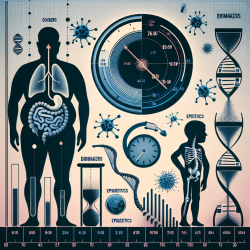Introduction
Whiplash-associated disorders (WAD) are a prevalent consequence of traffic collisions, often leading to significant disability and healthcare utilization. The complexity of managing acute WAD necessitates effective rehabilitation strategies to promote recovery. Recent research, conducted through a pragmatic randomized controlled trial, investigates whether government-regulated rehabilitation guidelines are more effective than general practitioner education or preferred-provider rehabilitation in enhancing recovery from acute WAD.
Research Overview
The study, titled "Is a government-regulated rehabilitation guideline more effective than general practitioner education or preferred-provider rehabilitation in promoting recovery from acute whiplash-associated disorders? A pragmatic randomised controlled trial," involved 340 participants with acute WAD grades I and II. Participants were randomly assigned to one of three interventions: government-regulated rehabilitation guidelines, education and activation by general practitioners, or a preferred-provider insurance-based rehabilitation program.
Key Findings
The primary outcome measured was the time to self-reported global recovery. Results showed that the median time to recovery was 59 days for the government-regulated guideline group, compared to 105 and 108 days for the preferred-provider and general practitioner groups, respectively. Although the differences were not statistically significant, a post hoc analysis suggested that the government-regulated guideline group experienced faster recovery within the first 80 days post-injury.
Implications for Practitioners
While the study did not find significant differences in long-term recovery outcomes among the groups, the short-term benefits observed with government-regulated guidelines suggest potential advantages in early recovery phases. Practitioners can consider the following strategies to enhance their practice:
- Adopt Government-Regulated Guidelines: Implementing structured rehabilitation guidelines can potentially lead to faster initial recovery, as indicated by the study's findings.
- Focus on Early Intervention: Prioritize early rehabilitation efforts within the first 80 days post-injury to maximize recovery benefits.
- Integrate Multimodal Interventions: Utilize a combination of education, reassurance, and physical therapies to address the multifaceted nature of WAD.
Encouraging Further Research
The study highlights the need for continued research to validate the short-term benefits of government-regulated guidelines and explore their long-term impact. Practitioners are encouraged to engage in further research and contribute to the evolving understanding of effective WAD management strategies.
Conclusion
While government-regulated rehabilitation guidelines did not significantly outperform other interventions in long-term recovery, their potential for faster short-term recovery warrants consideration. By integrating these guidelines into practice, practitioners can enhance early recovery outcomes for patients with acute WAD.
To read the original research paper, please follow this link: Is a government-regulated rehabilitation guideline more effective than general practitioner education or preferred-provider rehabilitation in promoting recovery from acute whiplash-associated disorders? A pragmatic randomised controlled trial.










